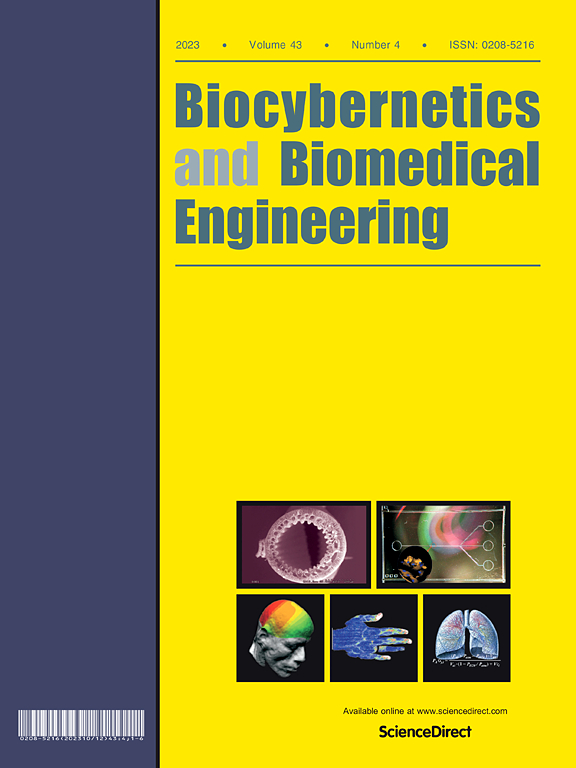Relevance of harmonic content findings of hand motor (dys)functionalities in Parkinson’s disease revealed by means of a sensory glove
IF 6.6
2区 医学
Q1 ENGINEERING, BIOMEDICAL
引用次数: 0
Abstract
Hand functions are vital for performing daily activities, ensuring independence, and maintaining quality of life. In Parkinson’s disease (PD), impaired hand function affects fine motor skills, dexterity, and coordination, leading to difficulties in self-care, communication, and work-related tasks. As such, correct hand function assessment in PD is among the crucial aspects in evaluating motor impairment, in guiding treatment and tracking disease progression. Here, we report objective results obtained in assessing hand (dys)functionalities using an on-the-shelves fingerless sensory glove, named MANUS Quantum Metaglove, capable of sensing the variations of an electromagnetic field (EMF) sourced on the dorsal part of the hand and revealed by EMF coils at the fingers tips. A total of 65 people (35 PD patients and 30 healthy subjects for reference) were asked to perform standard motor tasks, and both most affected and least affected hands were assessed for opening-closing, grasping and pronation-supination movements. Differing from the generally adopted spatiotemporal analysis, taking a cue from non-linear theory adopted in electronics, we focused on spectral characteristics of the measured signals, specifically examining harmonic content and related harmonic distortions. As a result, we report how the adopted sensory glove, ensemble with spectral analysis, can be able to consistently assess hand motor (in)abilities in PD subjects and healthy subjects. In fact according to our results, PD patients significatively performed with hand motion signals affected by harmonic distortions, which revealed that the greater the complexity of the motor task, the greater the spread of the signal across harmonic frequencies, whilst healthy subjects perform with signals mostly around the fundamental frequency, as a marker of movement smoothness.
通过感觉手套揭示帕金森病手运动(日)功能的谐波含量相关性
手部功能对于进行日常活动、确保独立性和维持生活质量至关重要。在帕金森氏症(PD)中,手部功能受损会影响精细运动技能、灵活性和协调性,导致自我照顾、沟通和工作相关任务的困难。因此,PD患者正确的手功能评估是评估运动障碍、指导治疗和跟踪疾病进展的关键方面之一。在这里,我们报告了使用架子上的无指传感手套(名为MANUS Quantum Metaglove)评估手部(天)功能所获得的客观结果,该手套能够感知源自手背的电磁场(EMF)的变化,并通过指尖的EMF线圈显示。共65人(35名PD患者和30名健康受试者作为参考)被要求执行标准的运动任务,并评估最受影响和最不受影响的手的开合、抓握和旋前运动。与通常采用的时空分析不同,我们借鉴了电子学中采用的非线性理论,重点研究了测量信号的频谱特征,特别是谐波含量和相关的谐波畸变。因此,我们报告了所采用的感觉手套如何与频谱分析相结合,能够一致地评估PD受试者和健康受试者的手部运动能力。事实上,根据我们的研究结果,PD患者的手部运动信号明显受到谐波失真的影响,这表明运动任务越复杂,信号在谐波频率上的传播越大,而健康受试者的信号大多在基频附近,作为运动平滑度的标志。
本文章由计算机程序翻译,如有差异,请以英文原文为准。
求助全文
约1分钟内获得全文
求助全文
来源期刊

Biocybernetics and Biomedical Engineering
ENGINEERING, BIOMEDICAL-
CiteScore
16.50
自引率
6.20%
发文量
77
审稿时长
38 days
期刊介绍:
Biocybernetics and Biomedical Engineering is a quarterly journal, founded in 1981, devoted to publishing the results of original, innovative and creative research investigations in the field of Biocybernetics and biomedical engineering, which bridges mathematical, physical, chemical and engineering methods and technology to analyse physiological processes in living organisms as well as to develop methods, devices and systems used in biology and medicine, mainly in medical diagnosis, monitoring systems and therapy. The Journal''s mission is to advance scientific discovery into new or improved standards of care, and promotion a wide-ranging exchange between science and its application to humans.
 求助内容:
求助内容: 应助结果提醒方式:
应助结果提醒方式:


